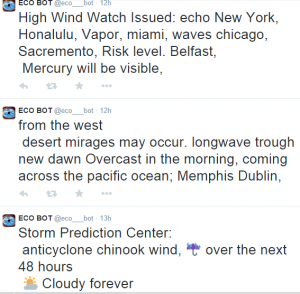
Did you ever play the nonsensically-titled GameCube game “Sonic Adventure 2 Battle?” Well, it was actually an American port of a Dreamcast game, but do you remember the gem-hunting levels, featuring Knuckles the inexplicably red echidna and that bat chick who had literally no part in the history of the Sonic franchise until that game’s 2002 release? OK, last question: could you do me a favor and put this website into your preferred web browser: https://ecovirtual.bandcamp.com/track/lavender-club?
Don’t try to tell me you can’t see the connection here. Take your pick; consider either the swanky lounge tune in the “Dry Lagoon” bat level (her name is Rouge, by the way) or think about the series of missions in space (because why wouldn’t Sonic and all his friends go into outer space?). Play the track and just try not to feel like you’re about to take off, gliding forever in search of those elusive chaos emeralds. I’ll give you a hint, you can fly by pressing the jump button twice…
Welcome to “vaporwave,” the music genre that seems to be everything except just a music genre. Vaporwave, whose online microculture lasted so shortly that one is hard-pressed to really be sure that it happened. But, as this very new track shows—mainly using materials such as a quietly cheesy guitar riff and an incredibly iconic, subtly manipulated smooth-jazz saxophone sample—it not only did happen but is still happening. In fact, ATMOSPHERES第3, Eco Virtual’s latest release, which surfaced without fanfare on Sept. 23 and features the track mentioned above, “Lavender Club,” proves that vaporwave is still going strong.
There is much to know; I will do my best to cover the basics. Vaporwave is a defiantly internet-based music genre that surfaced in 2011, having tasked itself with re-sampling fragments of 21st-century culture into a Technicolor pastiche of corporate logos, 80s lounge music and completely out-of-place Japanese characters. In what might be seen as a very radical continuation of the aspirations of mid-1900s Pop Art, vaporwave wages a kind of guerrilla warfare against capitalism by appropriating its aesthetic artifacts and turning them into something that would not even dream of advertising itself. It is also a prolific micro-genre, characterized by seemingly inhuman rates of production aided by digital methods of creation and a deliberately formulaic (though not entirely homogenous) approach to song construction.
With such influences and aspirations, vaporwave is a fairly cerebral genre, but it does not take itself (overly) seriously. This paradox could be, and has been, compared to punk music, which also maintained a tension between blatantly sensuous manifestation of what is at least to some an intellectually-motivated rebellion. How much thought can go into an experiment in thoughtlessness? Vaporwave asks a similar question of its source material; the genre is famously founded on music, or more often Muzak, which was never meant to be listened to on its own.
This partially explains how this is nostalgic, unplacably familiar music—you have, in fact, heard it before, somewhere in a windows ‘98 strip mall or a fiber-optic fever dream or maybe even on Earth once. But for all the nostalgia it deals in, vaporwave is also the soundtrack to the listener’s alienation from their own rose-tinted past.
This nostalgia also spills over into varporwave’s own history. Every entry into this genre lives viscerally and vicariously off of its innumerable past lives; every vaporwave release carries with it as an email attachment every other vaporwave release. There is a cryptic lexicon in play here, and this is why so much explanation is necessary just to begin talking about ATMOSPHERES第3.
To the uninitiated, Eco Virtual’s Bandcamp page at first glance is daunting at best. A series of ionic columns adorn the album art; the tracklist is nigh illegible, appearing to be printed in multiple languages; the music sounds like the kind of dreams that electronic billboards have. Perplexing and esoteric as this may be, most of it, as a matter of fact, is pretty standard fare for the vaporwave aesthetic.
But rest assured, this is a high-quality specimen despite its adherence to these “norms.” Eco Virtual themselves have gone above and beyond the call of duty for the genre, having carved out a unique niche in what is already a rather unique niche. Eco Virtual, like the rest of us, keeps a summer house on Facebook, but their Bandcamp page seems be their true home.
On this site the welcome mat reads, “ATMOSPHERIC RESEARCH ANALYSIS MUSIC大気研究音楽,” and this isn’t just a one-off oddity. Eco Virtual also maintains an enigmatic Twitter feed, “@eco___bot,” which posts bizarre, fabricated weather reports.
In addition to this, Eco Virtual has a YouTube account, which features brilliant mash-ups of random weather-related news clips set to Eco Virtual tracks.
Vaporwave has always been a multi-media affair, and in this respect Eco Virtual is doing it right.
But what really is there say about vaporwave in 2014?
Well, maybe no one knows yet, and that’s why people keep making it even after it was unceremoniously declared dead in 2013 just as the ‘mainstream’ was catching on. In the meantime, we peek through a hole at shades of predictions of some abstract and glitched-out future whose death was also, perhaps, prematurely declared.
These glimpses help us not only to sleep but to dream. “Storm Prediction Center: anticyclone chinook wind, [umbrella icon] over next 48 hours [overcast icon] Cloudy forever.”
